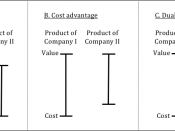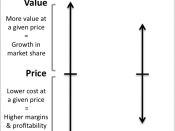In the last two decades, one of the most fundamental questions emerging in strategic management is how firms achieve and sustain competitive advantage. In a simplified world, understanding how firms achieve and maintain superior or abnormal returns means comprehending how firms position themselves in a certain market, what they produce and how they use resources at their disposal to do so. In this sense we may distinguish between the positional perspective, developed by Michael Porter, according to which achieving competitive advantage is the result of exploitation of imperfections in the market, the resource based perspective, which states that competitive advantage lies in the ownership of valuable resources, and the dynamic capabilities view, which follows the resource based view but also adds the dimension of time in the equation. In this essay, I will compare and contrast these three views after having described them, and will end by illustrating how they can all be brought together.
According to Michael Porter, operational efficiency (OE) as measured for example by financial management tools is necessary but not sufficient for firms to sustain viable superior returns. Firms that compete on OE can quickly imitate new technologies and management techniques of rivals, and feasibly reorient themselves when competition shifts the productivity frontier outwards. As Porter notes: "Although such competition produces absolute improvement in OE, it leads to relative improvement for no one." (Porter 1996, HBR, p.63) The dominant idea emerging from Porter's competitive forces approach developed in the 1980's is that superior returns are achieved when a company positions itself within its environment in way that creates a quasi-monopoly. By "environment" we refer to the industry in which the firm chooses to compete and by "position" we mean how the firm decides to compete in this industry. This framework provides a systematic way...


